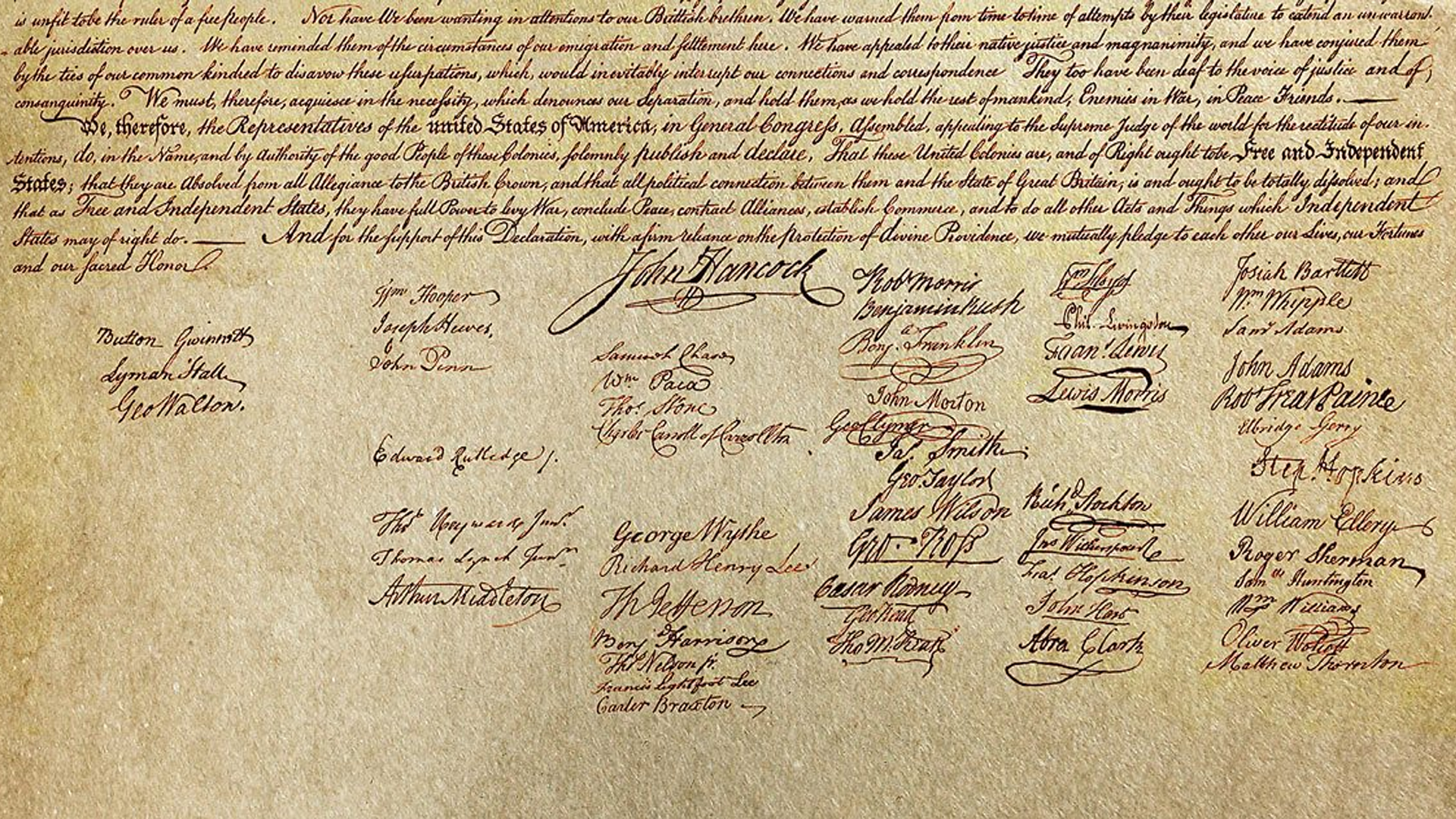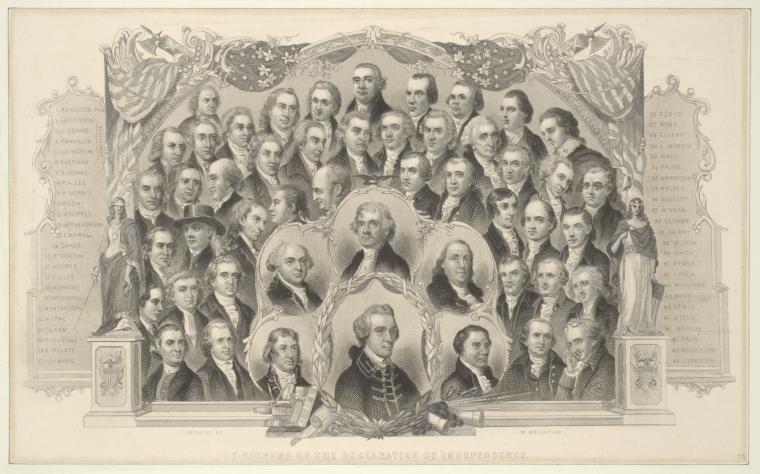Signing the Declaration of Independence: The Real Ink Day

Founding Fathers gathered to sign the Declaration of Independence in Philadelphia, 1776.
What Happened?
Despite what school textbooks might have you believe, the Declaration of Independence wasn’t fully signed on July 4, 1776. That’s when Congress approved the final text. But the actual, ceremonial signing? That took place almost a month later, on August 2.
The signatures didn’t all happen at once either. While John Hancock—President of the Continental Congress—famously signed first (and largest), others trickled in. Some delegates weren’t even present in Philadelphia on August 2, and a few, like New Hampshire’s Matthew Thornton, signed months later.
The signatures were arranged geographically, from north to south, beginning with Josiah Bartlett of New Hampshire and ending with George Walton of Georgia. In total, 56 men signed their names—some with enthusiasm, others reluctantly, knowing full well that this document marked them as traitors in the eyes of the British Crown.
Notably, some who voted for independence refused to sign. Others signed despite opposing the declaration, to present a united front. The engrossed copy—painstakingly handwritten on parchment by Timothy Matlack—was ordered on July 19 and became the iconic version we recognize today. Its names weren’t publicly revealed until early 1777, when Mary Katharine Goddard printed an official copy with all the signers listed.
Behind every signature was a story—and a risk. These were farmers, lawyers, scholars, and tradesmen standing up to the most powerful empire in the world. Their collective act of bravery launched a new nation—and set in motion the ongoing struggle to define what freedom and equality should really mean.
Why It Matters
The ink of the Declaration of Independence dried on August 2, but the revolution was just beginning. This was more than a ceremonial gesture, it was a bold gamble for liberty, stitched together by imperfect men risking everything for a future they could barely imagine. The signers weren’t just agreeing to words; they were pledging their lives, fortunes, and sacred honor. And in doing so, they gave shape to the most radical idea of the time: that people, not kings, should govern themselves.
?
Why did the signing of the Declaration of Independence take place on August 2 instead of July 4?
Who were some of the delegates that didn’t sign the Declaration, and why?
What risks did the signers face by putting their names on the Declaration?
How were the signatures on the Declaration of Independence arranged—and why does that matter?
Who was Timothy Matlack, and what role did he play in creating the final document?
Why weren’t the names of the signers made public until 1777?
How does the signing of the Declaration reflect both unity and disagreement among the colonies?
What does it mean to 'pledge your life, fortune, and sacred honor'—and how did the signers live up to that promise?
Dig Deeper
Explore the lives, motivations, and sacrifices of the 56 men who signed the Declaration—and what it cost them.
A closer look at the myths and realities behind America’s founding document.
Related

The First Amendment: America’s Blueprint for Freedom
The First Amendment protects freedoms of speech, religion, press, assembly, and petition. It’s the foundation of American democracy—but also a source of constant debate and interpretation.

The Great Society: Government as a Force for Good
The Great Society wasn’t just a policy agenda, it was a radical vision of what America could be. With sweeping reforms in health care, education, civil rights, immigration, and the environment, President Johnson’s plan aimed to eliminate poverty and racial injustice once and for all.

The Regulator Movement: Backcountry Rebellion Before the Revolution
Long before the American Revolution, farmers in North Carolina were already fighting corruption and demanding justice.
Further Reading
Stay curious!
